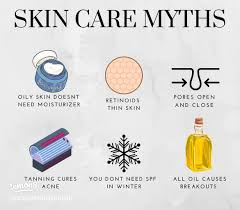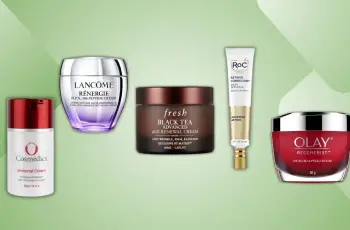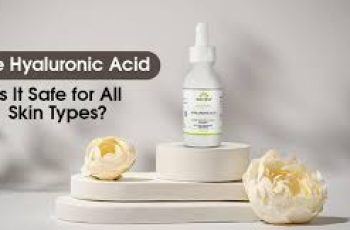
I Still Have Blackheads—Does That Mean My Cleanser Isn’t Working?
It can be frustrating when you follow a consistent skincare routine, choose products carefully, and never skip cleansing, yet stubborn blackheads continue to appear and make your skin feel congested despite your best efforts.
You may have researched acne treatments, invested in quality cleansers, and paid close attention to ingredients, only to still see small dark spots across your nose, chin, or forehead when you examine your face in the mirror.
Blackheads are extremely common and not a reflection of poor skincare habits or “dirty skin,” but it’s understandable to feel disappointed when your products don’t seem to be delivering the results you expect.
If you’re wondering whether your cleanser is to blame, the answer isn’t always straightforward because blackheads form for many reasons, and cleansing is only one part of a bigger, more complex skincare puzzle.
To understand the connection between blackheads and your cleanser, we spoke to board-certified dermatologists Dr. Kseniya Kobets and Dr. Nazanin Saedi, who shared their expertise on causes, prevention, and effective solutions.
What Are Blackheads and Why Do They Form?
Blackheads are a type of non-inflammatory acne known as open comedones, which occur when pores become clogged with a combination of excess sebum, dead skin cells, and sometimes residue from makeup or skincare products.
When the contents of a clogged pore are exposed to oxygen in the air, the material oxidizes and darkens, creating the characteristic black or dark brown appearance that makes blackheads so easily visible on the skin.
Dr. Kobets explains that blackheads aren’t caused by dirt, a common misconception, but by a natural chemical reaction. “The dark color is the result of oxidized oil and keratin, not environmental debris or inadequate cleansing.”
Blackheads are most likely to appear in the T-zone—the forehead, nose, and chin—where oil glands are more active, though they can also form on the back, chest, shoulders, and even inside the ears in some individuals.
People with oily skin tend to be more prone to blackheads because their sebaceous glands produce more sebum, but those with dry or combination skin types can also experience them at different times.
Does Having Blackheads Mean My Cleanser Isn’t Working?
If you’re using a cleanser daily and still struggling with blackheads, it doesn’t automatically mean the product is ineffective or that you need to immediately switch to a stronger, more aggressive formula.
According to Dr. Kobets, over-cleansing can actually backfire. “Cleansing too harshly or too often strips the skin of its natural oils, which can lead to irritation, dryness, and even increased oil production over time.”
This oil rebound effect can worsen congestion and cause more blackheads, so it’s essential to use a cleanser that balances the skin rather than leaving it feeling tight or “squeaky clean” after each use.
Dr. Saedi adds, “A healthy skincare routine isn’t just about clearing oil and debris. It should also support the skin barrier, which means including ingredients that replenish, hydrate, and protect the microbiome.”
A cleanser alone cannot fully treat blackheads because the underlying cause often involves oil production, dead skin buildup, and genetics, which require a combination of targeted treatments and lifestyle adjustments.
Signs Your Cleanser Might Be Too Weak or Too Harsh
Your cleanser may not be the right fit if you notice persistent oiliness shortly after washing or, conversely, excessive dryness, irritation, or flakiness that disrupts your skin’s natural moisture balance.
If blackheads are concentrated in specific areas and you’re not exfoliating or using other active treatments, your cleanser might need to contain ingredients like salicylic acid or benzoyl peroxide to effectively decongest pores.
However, dermatologists caution against assuming a stronger formula is always better. Stripping the skin can worsen breakouts and compromise barrier function, leading to more inflammation and long-term issues.
Instead, look for a cleanser that suits your skin type and incorporates effective yet gentle active ingredients to address blackheads while maintaining hydration and barrier integrity at the same time.
What Ingredients Should You Look For?
Dr. Kobets and Dr. Saedi recommend paying attention to formulation and key ingredients when selecting a cleanser that targets blackheads effectively without irritating or over-drying your skin.
Salicylic Acid (BHA): This oil-soluble acid penetrates deep into pores, dissolving sebum and dead skin that contribute to blackheads. It also has anti-inflammatory properties that reduce redness and swelling.
“Salicylic acid is particularly helpful for people with clogged pores,” Dr. Kobets explains. “It gently exfoliates inside the pore, preventing buildup and promoting clearer skin over time without causing irritation.”
Benzoyl Peroxide: Another effective ingredient, benzoyl peroxide reduces acne-causing bacteria while clearing excess oil and debris from pores. However, it can bleach fabrics, so use caution with towels and pillowcases.
Dr. Kobets recommends alternating benzoyl peroxide and salicylic acid rather than using both simultaneously, especially if your skin is sensitive, as combining them can lead to unnecessary irritation or peeling.
Gentle Hydrating Agents: Ingredients such as glycerin, ceramides, niacinamide, and hyaluronic acid help restore hydration and repair the skin barrier, which supports overall health and resilience against breakouts.
How to Build a Balanced Routine to Combat Blackheads
A good cleanser is a strong first step, but treating blackheads effectively requires a consistent skincare routine that includes additional ingredients and strategies beyond daily cleansing.
Use a Retinoid: Retinoids speed up cellular turnover, preventing dead skin cells from accumulating and clogging pores. They also reduce pore size over time, making them a highly effective treatment for blackheads.
Dr. Kobets suggests using a retinoid a few times a week at night and gradually increasing frequency as your skin adjusts. This ensures you get the benefits without overwhelming sensitive or reactive skin.
Moisturize Wisely: Choose a lightweight, non-comedogenic moisturizer to keep skin hydrated without clogging pores. Avoid heavy silicones and occlusive formulas if you notice they contribute to congestion.
Spot Treatments: For stubborn areas, consider targeted spot treatments containing salicylic acid, benzoyl peroxide, or sulfur. Use sparingly to avoid irritation, and focus on problem spots rather than the entire face.
Exfoliation: Gentle chemical exfoliants like lactic acid or glycolic acid can complement salicylic acid by removing dead surface cells and improving skin texture, but avoid excessive scrubbing or harsh physical exfoliants.
Professional and At-Home Treatment Options
If blackheads persist despite your best efforts at home, dermatologists may recommend in-office treatments like chemical peels, Hydrafacials, or laser therapies to deeply cleanse and minimize clogged pores.
Light therapy masks that use blue or red light can reduce acne-causing bacteria and inflammation, though they require consistency and can be a larger investment than traditional skincare products.
Manual blackhead extractions performed by a trained aesthetician or dermatologist can also provide immediate relief, though at-home squeezing or picking is discouraged due to the risk of scarring and infection.
The Bottom Line
Blackheads are a common, normal skin concern that even the most diligent skincare enthusiasts experience, so don’t view them as a sign of failure or assume your cleanser isn’t working correctly.
The key to managing blackheads is consistency and patience. Avoid over-cleansing or chasing quick fixes, and instead build a balanced routine that addresses oil, dead skin buildup, and barrier health simultaneously.
As Dr. Saedi explains, “The goal isn’t to strip your skin of all oil but to find harmony between oil production, exfoliation, and hydration so your skin can function and defend itself naturally.”
If your blackheads remain persistent or worsen, visiting a dermatologist can help you identify triggers and create a personalized treatment plan that includes prescription-strength options if needed.
With the right ingredients, gentle cleansing, and a holistic approach, you can minimize blackheads over time and maintain clearer, healthier-looking skin without compromising your skin barrier in the process.


